Infinite Possibilities of the US-2
The US-2 can take off and land on rough seas, as well as on the ground. Originally developed for the Ministry of Defense of Japan, some of its equipment has the potential for diverse applications other than rescue work and transport of emergency patients, if converted for usage by the private sector or other ministries and agencies.
Passenger Transport Amphibians
Acquiring civil type certification (major modification required)
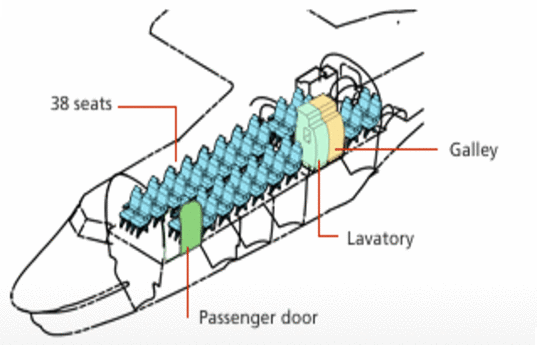
- Suggested applications
-
- Transporting residents on remote islands to urban districts
The US-2 has the ability to take off and land on water in an extremely short distance, so it can be operated as a passenger transportation amphibians even without a land runway. Therefore, it is possible to establish envrionmental friendly remote island air routes.
Passenger Services between Tokyo and Ogasawara (Chichijima) (plan)
Connecting a distance of approx. 1,000 km in about 150 minutes (one way) Reducing travel time to approx. 1/10 (takes an entire day by ship)
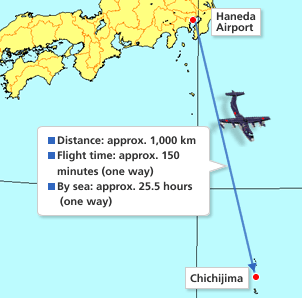
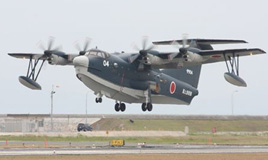
Schematic View of Landing Facility
The US-2 requires minimal landing facilities for operation.
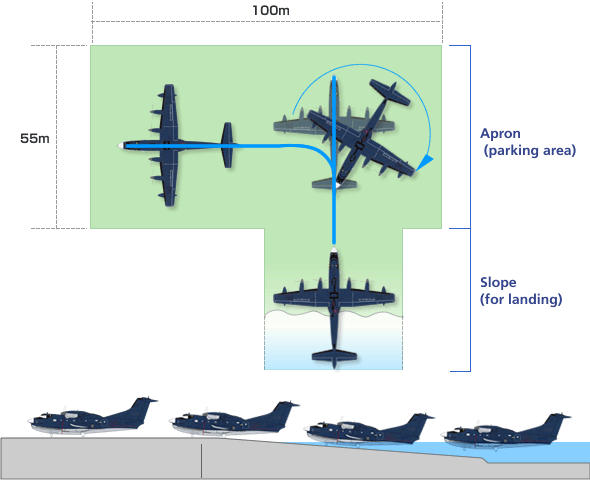
Multipurpose Amphibians
Adding necessary functions and performance (minor modification required)
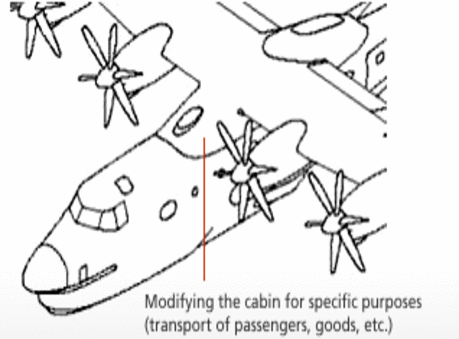
- Suggested applications
-
- Disaster relief
- Support for healthcare services on remote islands
- Ocean surveillance, preservation of remote islands on the national border
- Transport of goods, international emergency aid
In addition to the current principal service of transporting urgent patients from remote islands, the US-2 offers a wide variety of applications that serve to implement the basic plan laid out in the Basic Act on Ocean Policy, including providing remote islands with healthcare support, transporting relief supplies, and preservation of national land.
Healthcare Support for Remote Islands
Quickly offering healthcare support to remote islands that cannot be covered by ships and helicopters
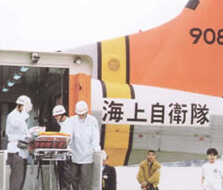
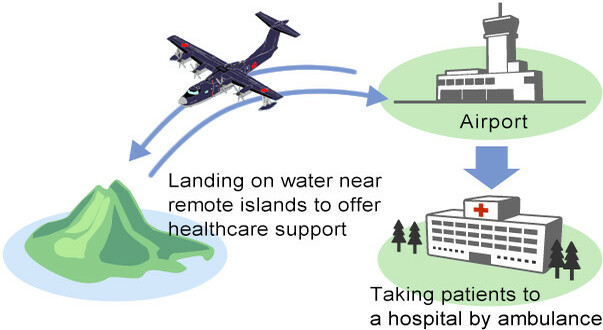
Transportation of Emergency Relief Supplies
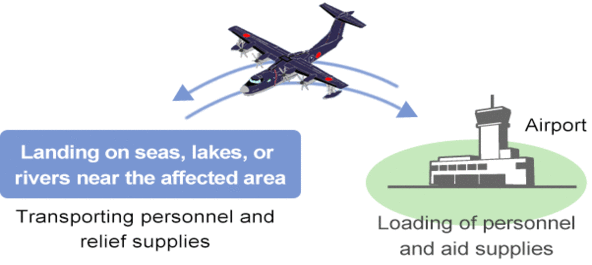
In the case of a disaster, the US-2 transports personnel, relief supplies, etc. to areas that cannot be accessed by land. Should the airport be damaged, the US-2 can land on a nearby sea, lake, river, etc.
Preserving the Land of Islands Far Removed from the Mainland
The US-2 boasts a long flight range of approx. 4,500 km, making it possible to perform prompt conservation (shore protection work, etc.) of islands far from the mainland, such as Okinotori Island.
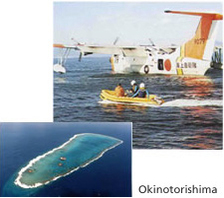
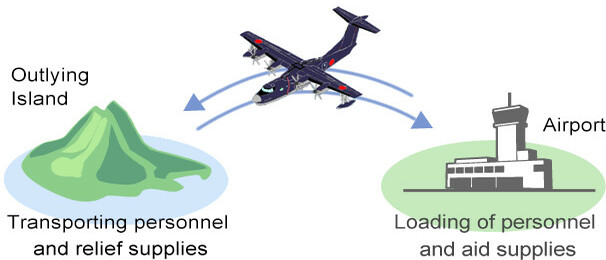
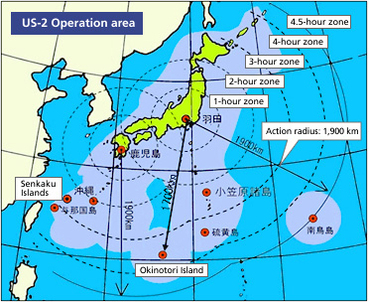
Time required traveling between Tokyo and Okinotori island
- Ship: Approximately 2 days (one way)
- US-2: Approximately 4 hours (one way)
TOPICS! The first US-2 demonstration abroad
Participated in the ASEAN Regional Forum field exercise on disaster relief for the first time
On May 4, 2009, eleven countries and one region, including Japan, ASEAN countries, the United States, and the EU, joined forces in an international field exercise on disaster relief, which assumed a major disaster resulting from a severe typhoon reaching Manila Bay, the Philippines.
Sent from the JMSDF, the US-2 participated in this field exercise and rescued victims by landing on Manila Bay, receiving considerable acclaim from other participating countries.
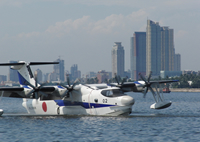
[Playing time: 3 minutes 06 seconds]
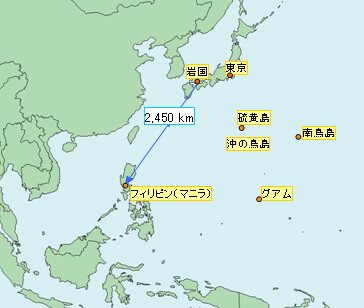
"US-2" Q&A
Pilots have commented that it is "much easier to fly than the US-1A."
In addition to improving operational performance, the pressurized interior of the aircraft has created a comfortable space for both the troops and rescuers.
Additionally, the dramatic improvement in long-distance cruising performance is one of the reasons why the US-2 has been highly rated. As the distance it can fly without refueling has been significantly extended, operational options have also expanded.
Only three countries produce amphibious aircraft: Japan, Canada, and Russia. Among them, only the US-2 can land on the open ocean, carry a large number of passengers, and fly long distances, meeting all of these market requirements.
What we, as manufacturers, are currently tasked with is reducing manufacturing costs.
Since this aircraft was developed using national assets, we believe that the first priority is to expand its use domestically.
One of the things we are researching is adding a firefighting function to the US-2. Not only is it useful for extinguishing forest fires that occur frequently, but its biggest advantage is that when a large-scale disaster occurs, it can be used to extinguish fires in areas that cannot be reached by fire trucks or helicopters.
Another idea is to dispatch an ``emergency STOL Flying Boat'' to emergency patients on remote islands that cannot be handled by a medical helicopter.
If you consider operations that take advantage of the US-2's unique amphibious capabilities, the possibilities will expand even further. Protecting the safety and welfare of people living on remote islands is connected to protecting the country. After materializing these efforts, I would like to export our products in the near future as a symbol of contributing to society through our technological capabilities.
